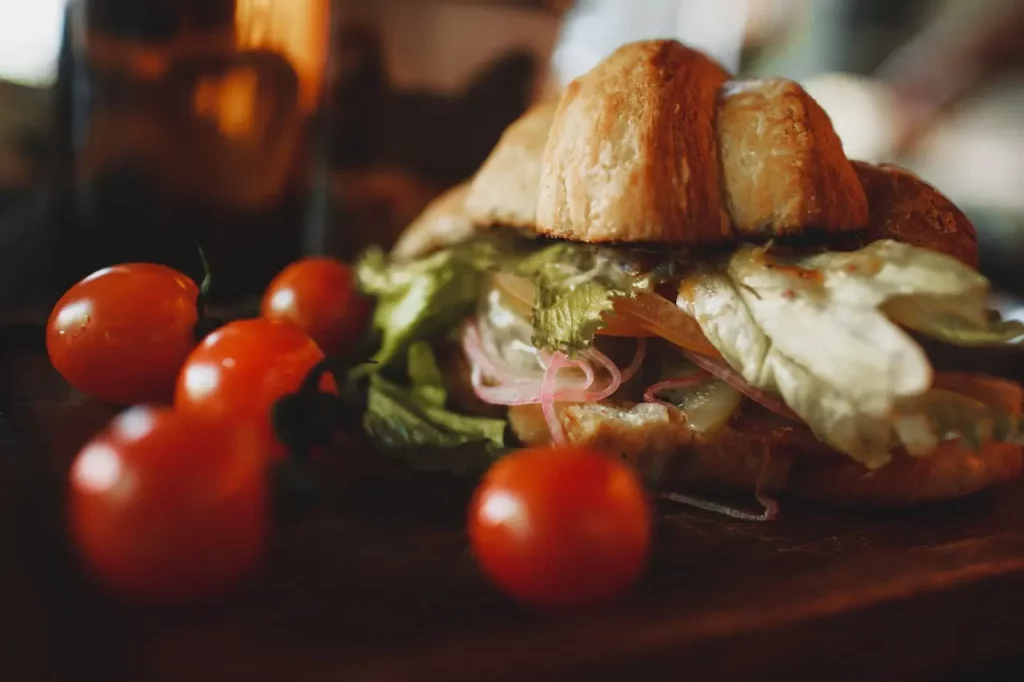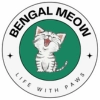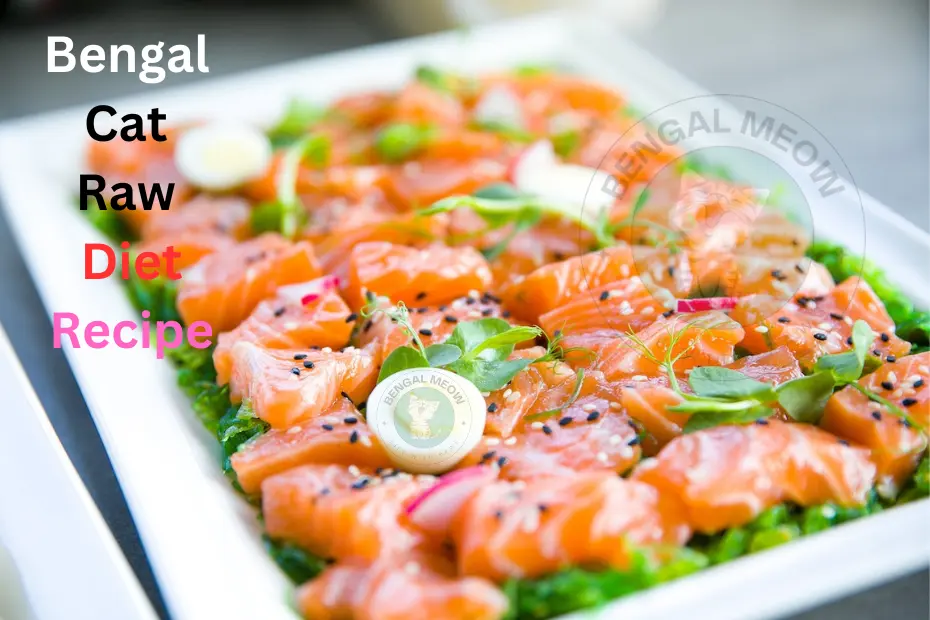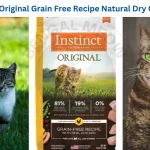5-Ingredient Bengal Cat Raw Diet Recipe
Bengal cats are known for their active lifestyles and energetic personalities. To ensure they thrive, a well-balanced raw diet is key. Learn how to create a power-packed bengal cat raw diet recipe that supports their vitality with 5 essential ingredients. Your feline friend deserves the best!
When it comes to feline nutrition, the term “raw diet” has been making waves, and with good reason. Bengal cats, known for their active and playful nature, require a diet that supports their vitality and overall well-being. In this article, we’ll explore the world of raw diets for Bengal cats, providing you with insights, tips, and a homemade raw diet recipe that can transform your feline friend’s mealtime experience.
Understanding the Bengal Cat’s Dietary Needs
Bengal cats, like their wild ancestors, are obligate carnivores. This means that their bodies are biologically adapted to thrive on a diet primarily composed of meat. Understanding their carnivorous nature is crucial when considering a raw diet.
These graceful creatures require a diet rich in high-quality protein to fuel their energy and maintain their lean muscle mass. Moreover, they need essential nutrients like taurine, an amino acid vital for heart health and vision.
Read More Bengal Cat vs Maine Coon – Unveiling Their Unique Charms🐾
Crafting a Balanced Raw Diet for Your Bengal Cat
Designing a balanced raw diet for your Bengal cat involves careful consideration of various factors. Begin with a variety of protein sources such as lean meats (chicken, turkey, rabbit) and include fatty fish for omega-3 fatty acids. Organ meats like liver and kidney provide essential vitamins and minerals in a natural form. These components mirror what a wild cat might consume in its natural habitat.
Read More The 5 Ultimate Picks: Unveiling the Best Wet Cat Food for Bengals
Preparing Homemade Raw Meals
Homemade raw diets offer the advantage of full control over ingredients, but they require meticulous preparation. Handle raw ingredients with caution to avoid cross-contamination and ensure your cat’s safety. To create a well-rounded meal, follow the 80-10-10 ratio: 80% meat, 10% bone, and 10% organ meats.
The bone content is crucial for dental health and a natural calcium-phosphorus balance. Mixing the ingredients thoroughly ensures your Bengal cat gets all the nutrients they need in each bite.
Read More The Ultimate Guide to Choosing the Best Cat Food for Bengals – Top 10 Picks
Transitioning Your Bengal Cat to a Raw Diet
Switching to a raw diet requires patience and gradual introduction. Abrupt dietary changes can lead to digestive upset, so ease your Bengal into the new diet over a few weeks. Start by mixing a small amount of raw food into their current diet and increase the proportion gradually.
Monitor their response and adjust the transition pace accordingly. Observe their energy levels, coat condition, and digestion during this period.
Read More The Enigmatic Allure of the Black Bengal Cat
Monitoring Your Bengal Cat’s Health and Progress
A well-balanced raw diet can have positive effects on your Bengal cat’s health. Monitor their weight and energy levels, ensuring they maintain a healthy body condition. One of the most noticeable changes might be in their coat—expect a shinier, healthier coat as their overall nutrition improves.

However, remember that individual responses can vary. Regular veterinary check-ups are essential to track their progress and make any necessary adjustments to the diet. Your vet can also offer guidance on taurine supplementation, a critical nutrient for cats.
Read More Unveiling the Best Dry Food for Bengal Cats
Dealing with Potential Concerns and Risks
While raw diets offer numerous benefits, they can also pose risks if not handled correctly. Foodborne pathogens are a concern when handling raw meat. Thoroughly wash hands, utensils, and surfaces after preparing raw meals. Additionally, allergies and sensitivities can arise.
Monitor your cat for any adverse reactions and consult your vet if needed. Always seek professional advice when embarking on a new dietary regimen.
Read More Snow Bengal Cat: A Guide to a Stunning and Playful Breed
Alternatives to Homemade Raw Diets
If crafting a homemade raw diet seems daunting, there are alternatives to explore. Commercial raw diets, available in pet stores, offer convenience without compromising on quality. Freeze-dried and dehydrated raw options are also available and provide a middle ground between raw and kibble diets.
Assess your Bengal cat’s preferences, your lifestyle, and budget when deciding on the best feeding approach.
Read More 10 Surprising Facts About Orange Bengal Cat
Tips for a Successful Raw Feeding Experience
For a successful raw feeding journey, consider rotating protein sources to provide variety and a wide range of nutrients. Supplements can also play a role in enhancing the diet. Omega-3 fatty acids, sourced from fish oil, promote skin and coat health.
Taurine supplements can be beneficial, especially if you’re not feeding whole prey. Additionally, raw diets contribute to a cat’s overall hydration due to their high moisture content.
Read More Discover 7 Mesmerizing Bengal Tabby Mix Traits
Overcoming Challenges in Implementing Raw Diets
Transitioning to a raw diet might come with challenges. Some Bengal cats may be fussy eaters initially. Gradual introduction and patience are key to overcoming this hurdle. Behavioral changes can also occur as your cat’s diet changes. Keep an eye on their behavior and consult with your vet if needed.
Cost and ingredient sourcing can be another consideration. Research local suppliers for quality meats and explore buying in bulk for cost savings.
Read More Are Bengal Cats Aggressive? 8 Myths Busted!
Long-term Benefits of a Raw Diet for Bengals
Embracing a raw diet for your Bengal cat can yield long-term benefits. Improved dental health is often observed, as the natural chewing action on bones helps keep teeth clean. Enhanced digestion and reduced allergies are common outcomes of providing a diet closely aligned with a cat’s biological needs.
By supporting their health through thoughtful nutrition, you’re setting the stage for a longer and happier life for your feline companion.
Read More The Ultimate Showdown: British Shorthair vs Bengal
FAQs about Bengal Cat Raw Diet Recipe
Why should I consider a raw diet for my Bengal cat?
Transitioning your Bengal cat to a raw diet offers numerous benefits. Raw diets mirror their natural carnivorous diet, promoting better digestion, healthier skin, and shinier coats. These diets can also help manage weight and reduce the risk of allergies and sensitivities.
How do I ensure my Bengal cat gets all the necessary nutrients from a raw diet?
Crafting a balanced raw diet requires variety. Include lean meats like chicken and turkey, organ meats for essential vitamins and minerals, and fish for omega-3 fatty acids. Rotate protein sources to ensure a spectrum of nutrients. Additionally, consider consulting a veterinarian to guide you on supplementation, if needed.
Is it safe to feed my Bengal cat a raw diet at home?
When handled and prepared correctly, a homemade raw diet can be safe for your Bengal cat. Practice proper hygiene by washing hands, surfaces, and utensils thoroughly after handling raw ingredients. Use trusted sources for meats and follow food safety guidelines to minimize the risk of foodborne pathogens.
How can I transition my Bengal cat to a raw diet effectively?
Transitioning should be gradual to prevent digestive issues. Start by mixing a small amount of raw food into their current diet and slowly increase the proportion. Monitor their response, ensuring they maintain energy levels and proper digestion. Be patient and observant during the transition process.
Remember, every Bengal cat is unique, and it’s essential to monitor their health, behavior, and overall well-being throughout the transition to a raw diet. Consulting with a veterinarian before making any significant dietary changes is recommended to ensure your cat’s specific needs are met.
Conclusion
Choosing a raw diet for your Bengal cat is a decision rooted in care and concern for their well-being. By understanding their nutritional needs, preparing balanced meals, and navigating the transition with patience, you’re enhancing their quality of life.
Remember, each Bengal is unique, and finding the ideal diet may involve some trial and error. As you embark on this nutritional journey, you’re forging a stronger bond with your feline friend while providing them with the nourishment they deserve.





